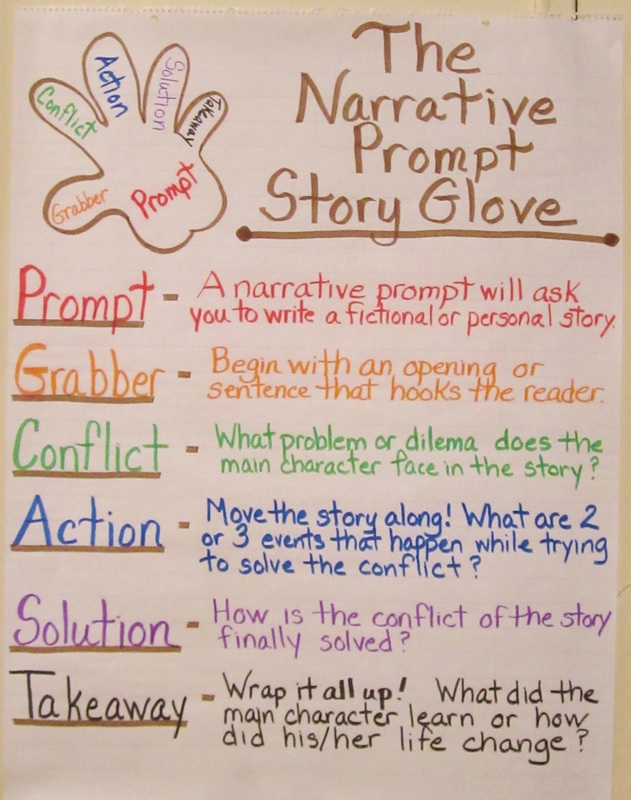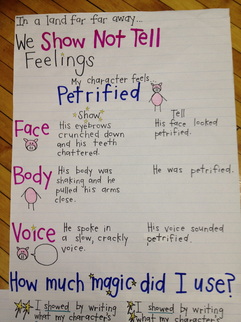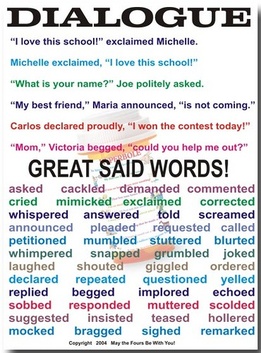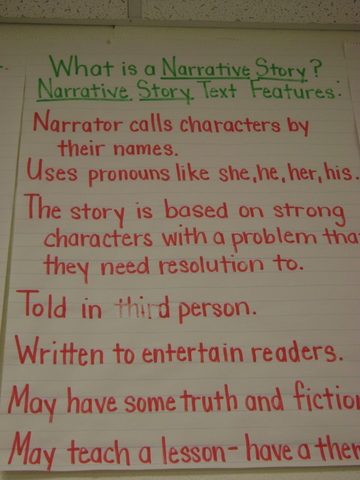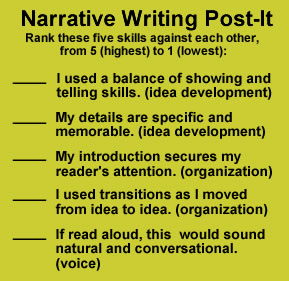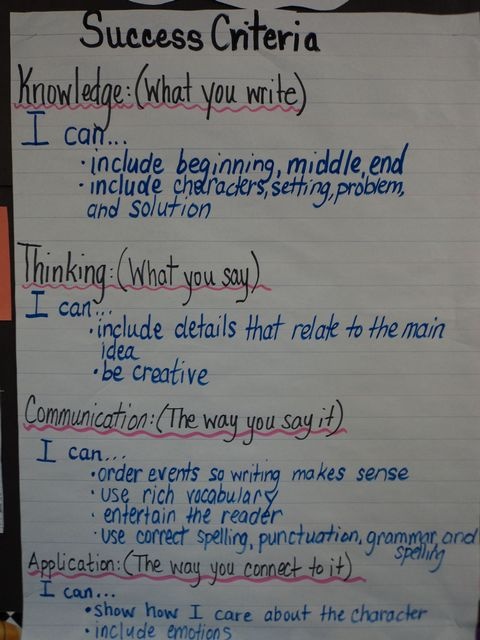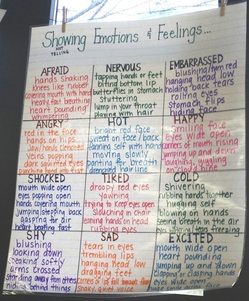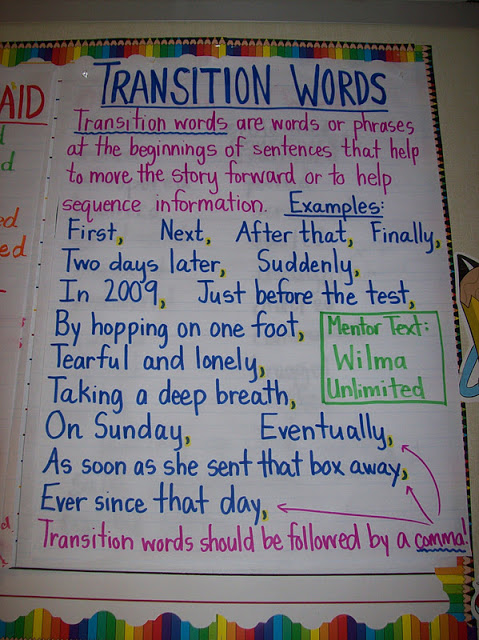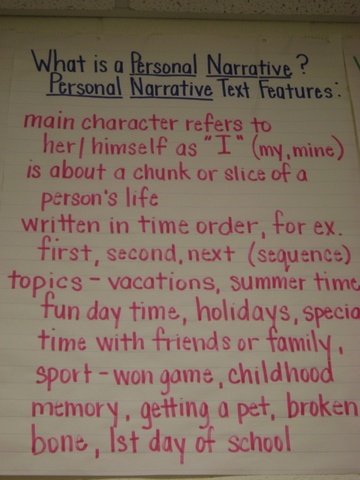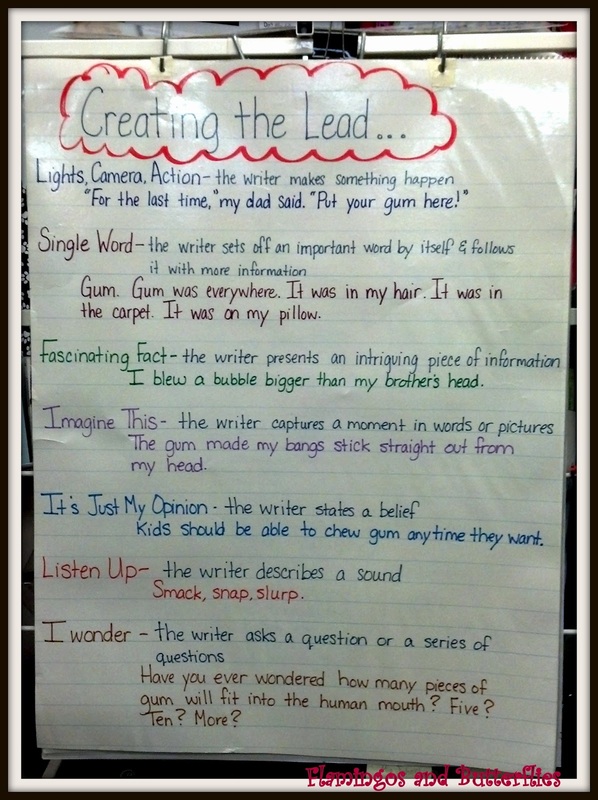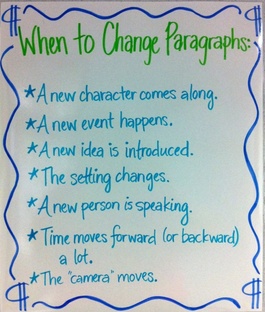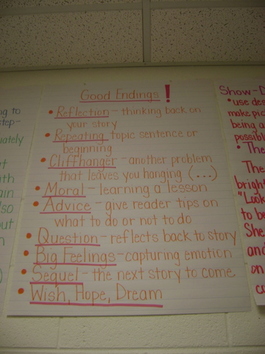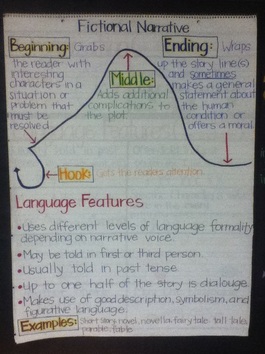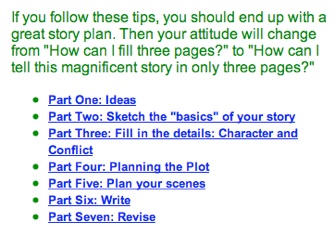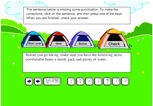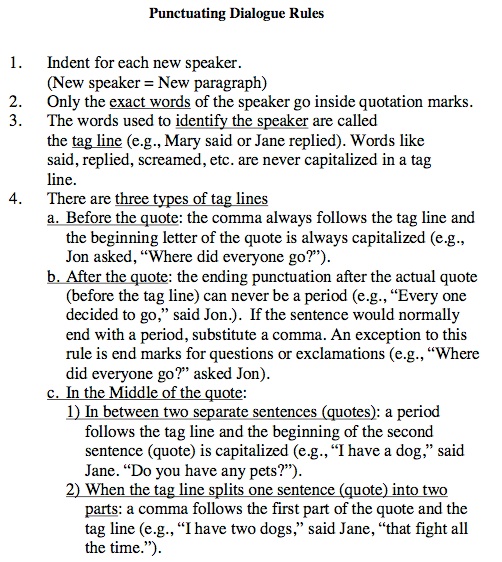Narratives
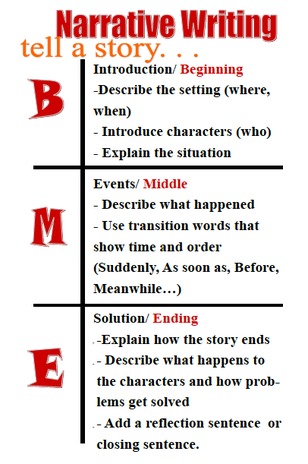
http://www.teacherspayteachers.com/Store/Jen-R
3. Write narratives to develop real or imagined experiences or events using effective technique, descriptive details, and clear event sequences.
a. Orient the reader by establishing a situation and introducing a
narrator and/or characters; organize an event sequence that unfolds
naturally.
b. Use narrative techniques, such as dialogue, description, and pacing,
to develop experiences and events or show the responses of
characters to situations.
c. Use a variety of transitional words, phrases, and clauses to manage
the sequence of events.
d. Use concrete words and phrases and sensory details to convey
experiences and events precisely.
e. Provide a conclusion that follows from the narrated experiences or
events.
Fifth grade students write real and imaginative stories. Students are expected to use description to show characters‟ thoughts and feelings as well as the details of characters‟ interaction through dialogue. As students develop characters and use dialogue, they will need to understand how to introduce characters and how to engage characters in conversation in their writing.
a. Orient the reader by establishing a situation and introducing a
narrator and/or characters; organize an event sequence that unfolds
naturally.
b. Use narrative techniques, such as dialogue, description, and pacing,
to develop experiences and events or show the responses of
characters to situations.
c. Use a variety of transitional words, phrases, and clauses to manage
the sequence of events.
d. Use concrete words and phrases and sensory details to convey
experiences and events precisely.
e. Provide a conclusion that follows from the narrated experiences or
events.
Fifth grade students write real and imaginative stories. Students are expected to use description to show characters‟ thoughts and feelings as well as the details of characters‟ interaction through dialogue. As students develop characters and use dialogue, they will need to understand how to introduce characters and how to engage characters in conversation in their writing.
